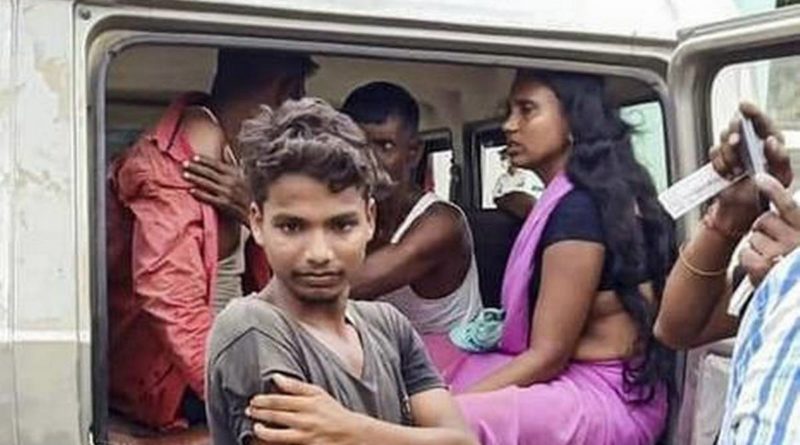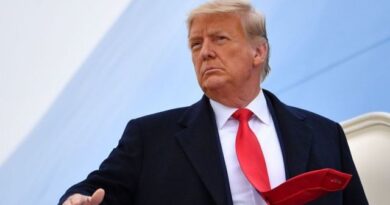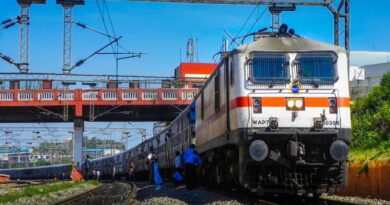Should India-Nepal negotiate after firing on the border?
There was tension about the old border dispute between India and Nepal. Now the news of firing incident on the Indo-Nepal border coming from Sarlahi district has jolted the Indians. There is also news of two Indian citizens being injured in this incident. After this, worries about India-Nepal relations have increased.
Earlier on Saturday, the lower house of Nepal’s parliament has passed the new political map of the country. After this, India rejected this map saying that “it is neither based on historical facts nor does it make any sense”.
In this map, Limpiyadhura, Kalapani and Lipulekh are shown as part of the Nepal border. Six months ago, India released its political map showing these places as part of the Indian border.
Experts believe that the recent firing incident amid the ongoing border dispute may raise concerns about the relationship between the two countries.
The information about the incident is not clear at the moment. But according to local journalists, the Armed Police Force of Nepal (Armed Guard Force) allegedly opened fire on Indian civilians crossing the border on Friday morning when the Indian group tried to snatch a self-loading rifle from them. However, the Indian side of this story is not yet clear.
So now the big question is: Will such incidents near the border harm Indo-Nepal relations? Will they harm the close relationship or the ‘roti aur beti’ relationship, which people on both sides of the border have played for centuries.
Experts warn that this can happen. People have heard little about the incidents of firing on the border by Nepali security forces. Just as firing incidents are not heard from Indian security forces.
However, there are reports of small tension on the 1,880 km long and mostly open Bhat-Nepal border extending from Uttarakhand to Uttar Pradesh and West Bengal, Sikkim.
Retired professor Surendra Labha, who lives in Janakpur Dham, told BBC Hindi, “Whatever happened in the borderless borderlands is unfortunate. If such incidents continue, there will be further tension in the relationship. The two countries are already in a relationship over the Lipulek border dispute.” Has been affected. “
India’s SSB and Nepal’s APF (Armed Guard Force) have increased their patrolling. Nepal has increased its presence on the border in recent weeks. Nepal has dispatched new APF teams to the disputed and often less military presence of the Himalayan frontiers at Chhangru and Humla’s Limi, south of the Dipulekh with disputed military presence.
The movement of migrant laborers between the two countries has increased considerably during the Kovid-19 epidemic. Indians working in Nepal and Nepalis working in India have been seen trying to cross the border. And in recent times, tension on the border has also become quite common.
Both countries implemented lockdown to deal with Kovid-19. After this, many such incidents came to light that security forces of both Nepal and India used force to manage the crowd or to prevent anyone from crossing the border.
In recent weeks, there have been reports of tension on the Indo-China border in areas such as Bara, Bardiya, Jhapa. There APF or SSB has used force to stop the movements of people.
On 11 May, APF security forces from eastern Nepal opened fire in the eastern district of Jhapa to stop the mob of Indian farmers. It is said that those farmers were forcibly trying to enter those fields falling towards Nepal, where their crops are planted.
Later this issue was resolved by the Indo-Nepal cross border negotiations at the local level.
Chandra Kishore, a Nepalese journalist from the border village of Sarlahi, expresses concern over the incident at the Narayanpur border crossing on Friday morning and says that such incidents can damage the close relations between the two countries.
‘Mechanism developed to resolve the dispute’
Chandra Kishore told BBC Hindi that such incidents of firing will probably not affect Nepal-India relations, but they can have a very bad effect on local level or public relations. Officers on both sides should ensure that the security forces – APF and SSB – are trained better in terms of local and cross border sensitivity.
He says, “Even more important is that mechanisms and telephonic hotlines are built on both sides at the local cross-border level, so that the local representatives on both sides can form a common mechanism to resolve the dispute. Also on both sides of the border District officers should also maintain dialogue and cooperation among themselves. “
At the time of the growing controversy over Lipulekh, Limpiyadhura and Kalapani, the relations between India and Nepal are at their worst. Although the two South Asian neighbors remain together in the battle of Kovid-19, Nepal’s focus has shifted to its border security due to increasing tension on the Indo-Nepal border.
Shortly after the inauguration of the Uttarakhand-Gunji-Lipulek road on 8 May, Nepal sent an APF contingent to the village of Chhangaru in southern Lipulekh for the first time in history.
The government of Nepal has planned to increase the number of APF security forces in the border areas in its annual program and policy. These will be mostly those border areas, which cover 1880 km of Indo-Nepal border. Almost there There are a number of 1440 km long Sino-Nepal borders.
What should Nepal and India do now?
Retired Professor Surendra Labha believes that there is no other option but to talk.
He says, “Whether it is about the local cross-border level or the international tension between Nepal and Delhi, there is no other option but to negotiate. Both sides have to prioritize the dialogue. Otherwise the situation would worsen. “




